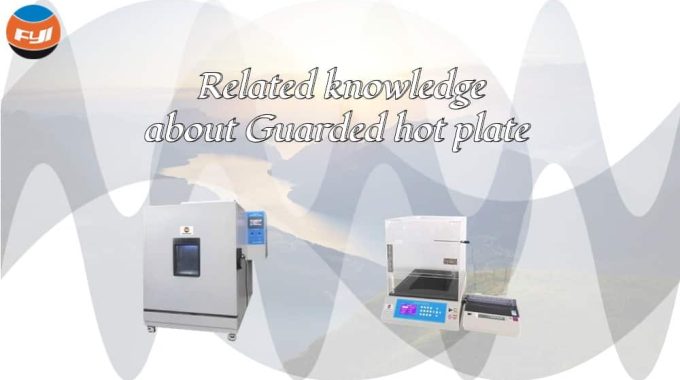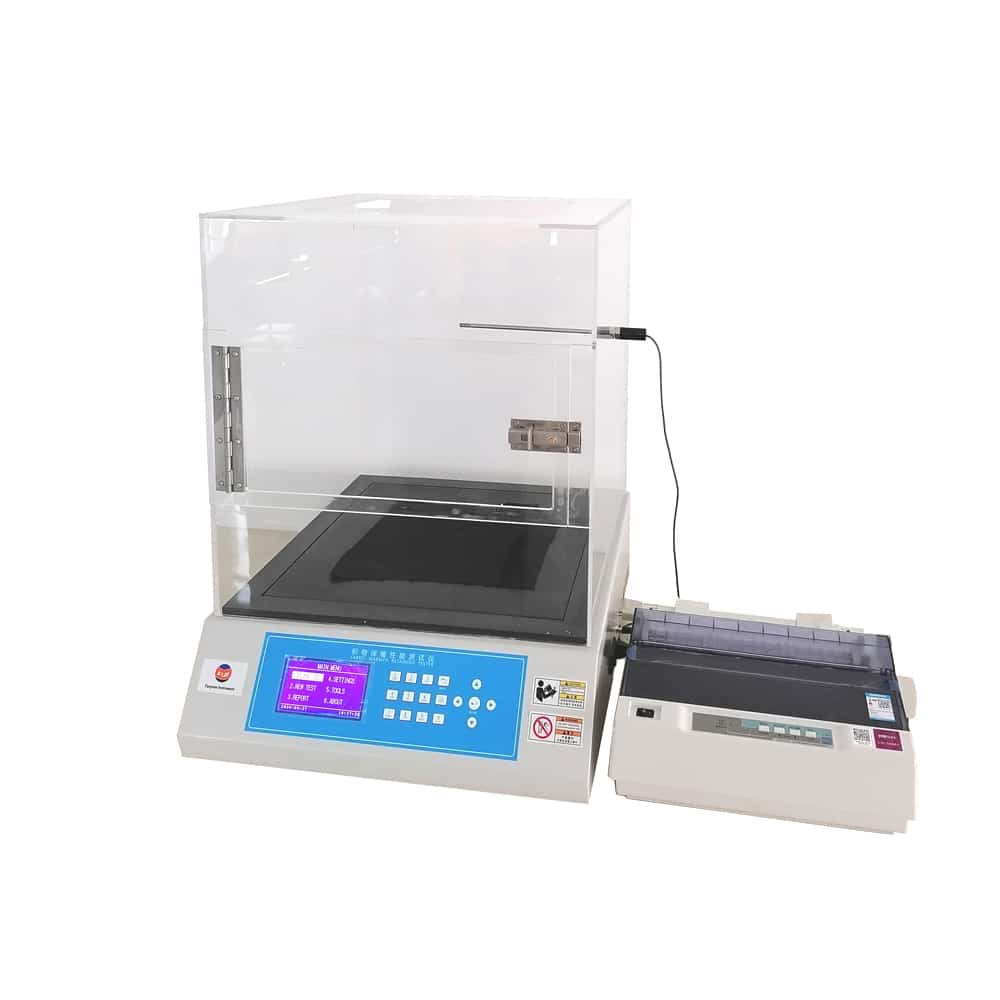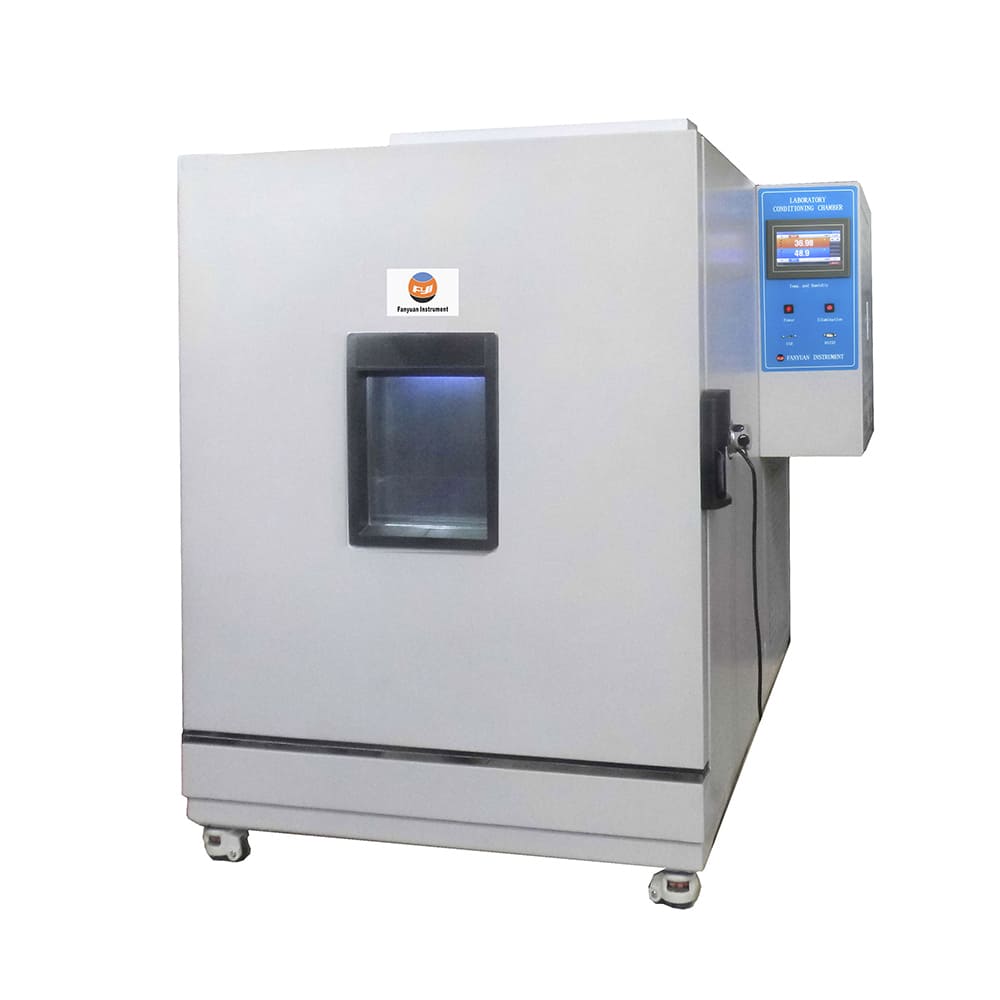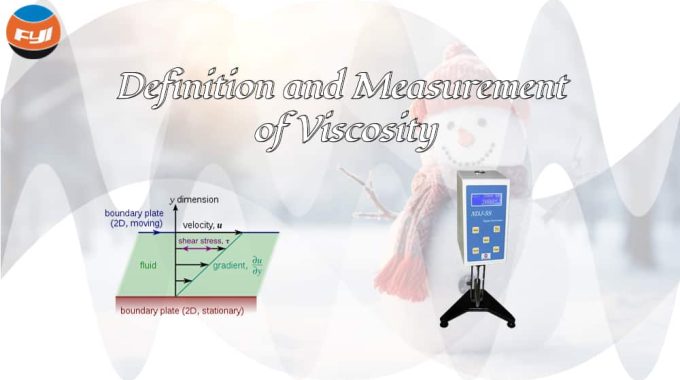
Related knowledge about Guarded hot plate
The heat and water vapor transfer properties of textile fabrics are major determinants of the wearer’s thermal comfort. The heat resistance of a fabric represents a quantitative assessment of the thermal barrier effectiveness the fabric provides to the wearer. The resistance of fabrics to water vapor is a critical property for clothing systems that must maintain thermal equilibrium in the wearer’s body. Clothing is an intermediary between the skin and environmental conditions, has high water vapor permeability, and can provide cooling to the body through evaporation.
In high activity levels or hot environments, thermal resistance values alone are insufficient to characterize and compare clothing systems. Sweat evaporation becomes an important way for heat loss. Additionally, in cold environments, high moisture permeability is important to minimize the accumulation of water in the garment, which can lead to increased discomfort. Therefore, the heat resistance and water vapor resistance of fabrics are needed to evaluate the heat exchange between the human body and the environment and are related to human comfort.
Contents
Thermal resistance
Thermal resistance is defined as the dry heat flow through the unit area of the textile under the condition of a stable temperature gradient, that is, the ratio of the temperature difference on both sides of the sample to the heat flow per unit area vertically through the sample. “Thermal resistance” is a quantitative measure of a fabric’s thermal insulation properties. Although radiation, conduction and convection are the main factors of heat loss in winter clothing, for people who exercise or work in winter, sweat evaporation is also the main component of heat loss. In addition, when the ambient temperature increases, the dry heat loss decreases, while the evaporative heat loss increases for cooling. Therefore, in high activity and hot environments, thermal resistance alone is not sufficient to characterize and compare textile and clothing performance, and the concept of “moisture resistance” must be introduced. “Moisture resistance” can quantitatively measure the water vapor transmission performance of a fabric caused by sweat evaporation.
In relevant standards, thermal resistance is used to characterize the heat transfer performance of textiles, and sometimes it is also used as the inverse “heat transfer coefficient” or “thermal conductivity coefficient”. No matter which instrument is used, the direct characterization index for measuring the heat transfer performance or insulation performance of the sample is the thermal resistance. According to the physical definition of thermal resistance, the thermal resistance formula is:
R= ![]() T × A/W
T × A/W
In the formula:
R——Thermal resistance, unit is ℃·m2 / w ;
![]() T——Temperature difference between two sides of the sample, unit is℃﹔
T——Temperature difference between two sides of the sample, unit is℃﹔
A——Test board area, unit is m2;
W——The heat loss of the sample, the unit is W。
It can be seen that the thermal resistance of the sample is directly related to the heat dissipation on a certain area and the temperature difference between the two sides.
Thermal and moisture comfort
ISO 7730 stipulates: “Thermal comfort is a psychological state that expresses satisfaction with the thermal environment.” Thermal comfort means: no shivering when cold, no sweating when hot; only when the heat generated and lost by the body reaches a balance, people will feel comfortable.
Clothing plays an important regulatory role in the human body-clothing-environment system. Clothing comfort is people’s comprehensive evaluation of the comfort effect of clothing. Whether people feel comfortable after dressing is not only related to the physical properties and characteristics of the clothing materials and clothing, but also related to people’s activity patterns, physiological and psychological factors and environmental conditions.
Clothing comfort includes three aspects: thermal and moisture comfort, contact comfort and visual comfort. Among them, thermal and moisture comfort is the most important performance. 80% of the energy consumed by people during activities will be converted into heat, and 90% of this heat will be dissipated through the skin. So the textile material used in a coat plays an important role in maintaining body temperature.
In addition to dissipating heat to the surrounding environment through radiation, conduction, and convection, the human body also dissipates heat through the evaporation of sweat on the body surface. Water vapor diffuses to the surrounding environment through the clothing system in time, making people feel comfortable. However, if clothing blocks the passage of water vapor and increases the humidity in the microclimate between human skin and clothing, when water vapor accumulates to a certain extent and condenses into water, people will feel uncomfortable. The thermal insulation performance and water vapor passage performance of clothing play an important regulatory role in the heat exchange process between the human body and the environment. Therefore, it is necessary to accurately test or evaluate this indicator so that it can be used as a thermal and hygroscopic comfort model to predict human thermal physiological comfort under different environmental conditions.
The sweating guarded hotplate simulates the heat and moisture transferred from the human body surface to the environment through clothing materials, and is used to measure the thermal resistance and moisture permeability of fabrics related to clothing comfort.
Guarded hot plate apparatus
Guarded hot plate
Guarded hot plates are used to determine the thermal resistance and thermal conductivity of various textiles. It has the function of emitting an audible warning after each black test or sample test is completed. After each test, the warmth retention rate, heat transfer coefficient, and CLO value can be displayed on the LED panel after each test and printed out by a dot matrix printer (LQ-300K or TM-300K). The LED panel can display the sample, protection board, base plate and ambient temperature in real time.

Sweating guarded hotplate

The sweating guarded hotplate is used to test the heat and water vapor resistance of fabrics, films, coatings, foams and leather, including multiple layers of garments, quilts, sleeping bags, upholstery and similar textiles or similar textiles under steady-state conditions. components. It is used to simulate the heat and mass transfer process that occurs on the surface of human skin.
The sweating guarded hot plate system is a system used to test the protective thermal effects of human sweating. The system consists of a hot plate, temperature control equipment, temperature sensor and data acquisition device. The hot plate is the core component of the system. It transfers heat to the surface of the test body through the heater and maintains a certain temperature, simulating the thermal effect caused by evaporation and heat dissipation when the human body sweats during exercise. Temperature control equipment is used to control the temperature changes of the hot plate to ensure that the temperature remains stable during the test. Temperature sensors and data acquisition devices are used to record temperature data during testing for later analysis.
Leave a Reply
You must be logged in to post a comment.



Did you ever think a blog could offer such a comprehensive and enriching experience?